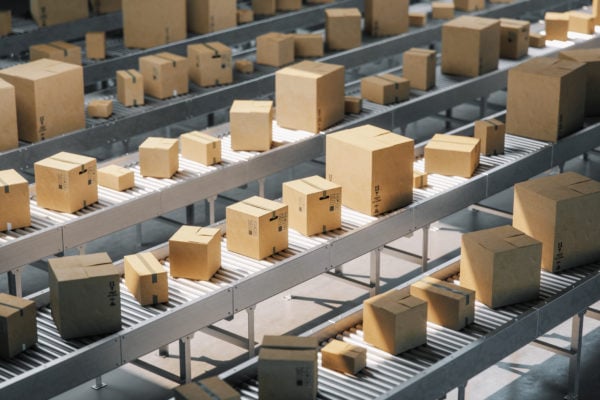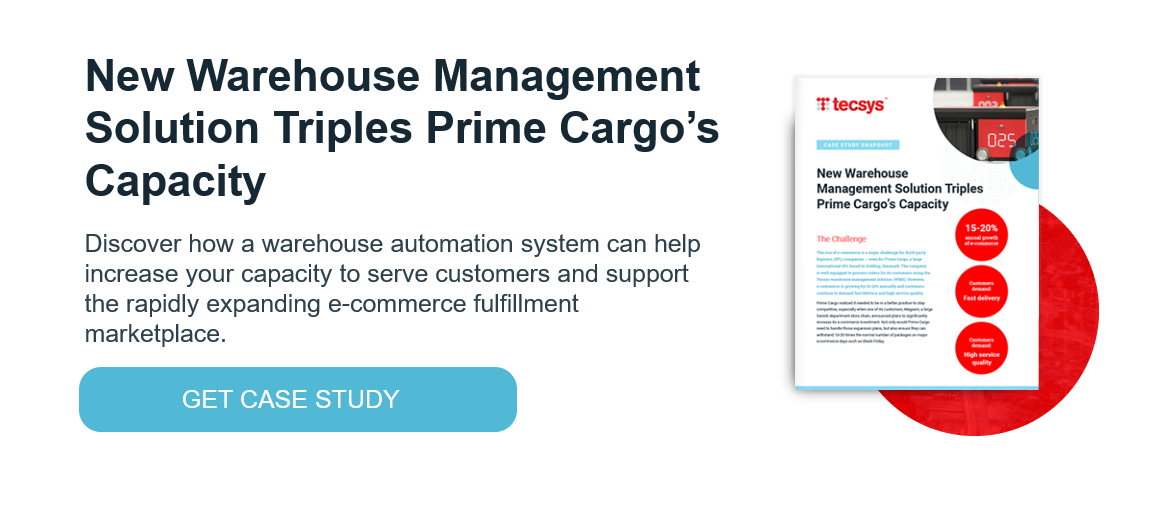Modern Retail Distribution Needs an Omnichannel Warehouse

Warehouses are under immense pressure amidst the ongoing convergence of traditional and retail distribution. Warehouse managers need to be ready to turn on a dime when they must adapt to changes. Retail distribution demands they do more — and do it faster — without spending any more money.
The underlying reason is retail customers have such high expectations. If you don’t provide stellar customer service, they’ll go elsewhere. Unless you’re the cheapest guy on the block and they’re price shoppers, they’ll move on.
To remain competitive, warehouses must evolve their processes to become a significant part of the customer service process. A modern warehouse is prepared to service new territories, pack orders in a new way and provide different ways of shipping. Retailers must make their warehouses able to support innovation and new ways of servicing customers.
Retail Distribution Demands Personalized Service at Scale
In the old days of distribution, a retailer used to order pallets and cases. The distributor would ship it to the retailer and the retailers would sell it directly to customers. Today, the retailer is saying, “What I want is for you to ship direct to my customer.”
Think about what that means for the warehouse. The customer doesn’t know what’s going on behind the scenes. The distributor must carry that inventory, then ship it direct to the consumer, but ship it as if it came from the store. They must put price tags on it and utilize specific types of packaging, while making it look like it came directly from the store.
Multiply that by 20 or 30 retailers, each making thousands of orders from the manufacturer, and that warehouse gets very complex, very fast. That’s what the modern warehouse must manage, without adding labor or cost.
Higher Volume, Lower Size
That’s one aspect of the complexity. On top of that, in retail distribution the order size is going down, while order volume is going up. For the warehouse, this means instead of picking 50 cases of something, they’re picking individual items from those cases, then grouping them together to fulfill a customer’s order.
Retail Demand is Seasonal
Another aspect of adding complexity to the warehouse is seasonality. The variance of demand has gone off the charts. Warehouses must figure out how to satisfy high peaks and troughs of demand without causing problems for customers, at the same time without having to onboard too many people. Many warehouses respond by having core staff, onboarding temp staff or using collaborative robots.
To respond to all of these challenges, warehouse managers need a new approach on how they orchestrate their warehouse to stay competitive and attract new customers.
Warehouses Need a Modern Warehouse System to Manage These Processes
Warehouses typically already have warehouse management systems in place, but they’re looking for new ways to solve the problems that come with retail distribution. These legacy systems are static and inflexible in the way they approach picking, packing and shipping. They may offer a single way to pick. Any changes in that standard process require custom coding. They’re hard to deal with, function like “bricks on a stick,” and can’t support the level of service modern warehouses require.
Hence, many warehouses are turning to modern warehouse management systems to support their new retail distribution model. These modern systems offer a user experience like the smartphone apps people are familiar with. They’re easy to manage and work like modern warehouse workers think these applications should work. Managers can give staff a phone or tablet and say, “Do this,” versus the old way which required a two-week training program.
Those same managers or supervisors can create personalized workflows or features in a non-technical process to change how specific processes work, to figure out the best way of running the warehouse. With increasingly complex warehouse processes like picking individual items then putting in a specific document or insert, the picker doesn’t know if the order is going to customer X or customer Y, so the warehouse system must direct them through the specific process needed for customer X or Y.
The most important aspect of a modern warehouse management system is that it makes sure the warehouse worker can do his or her job, which is now infinitely more complex, and not mess up. All the knowledge about every warehouse process or each customer’s order personalization requirements are going into the system and managed to completion.




